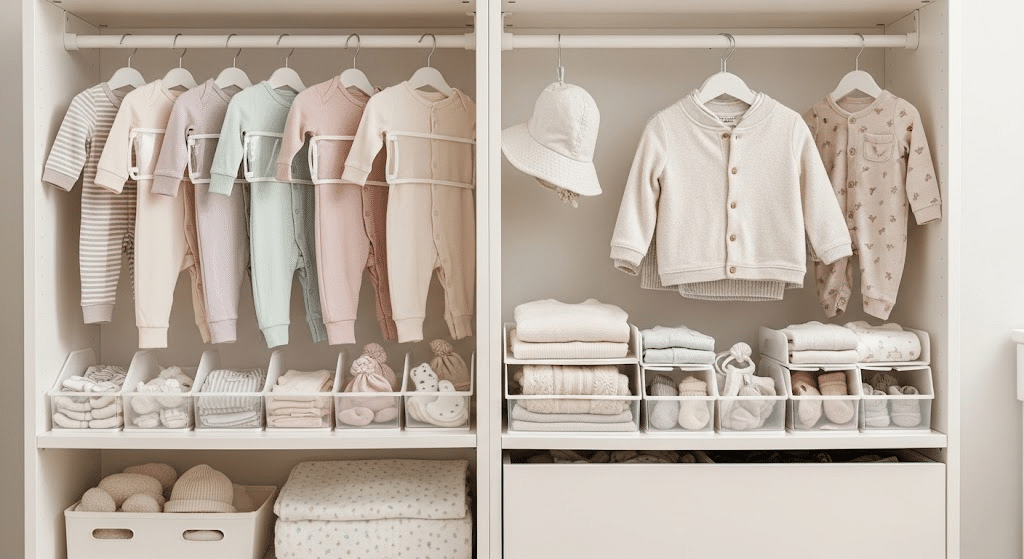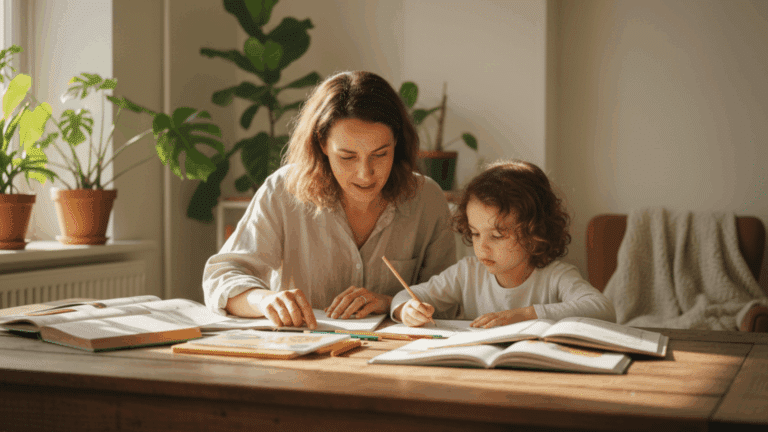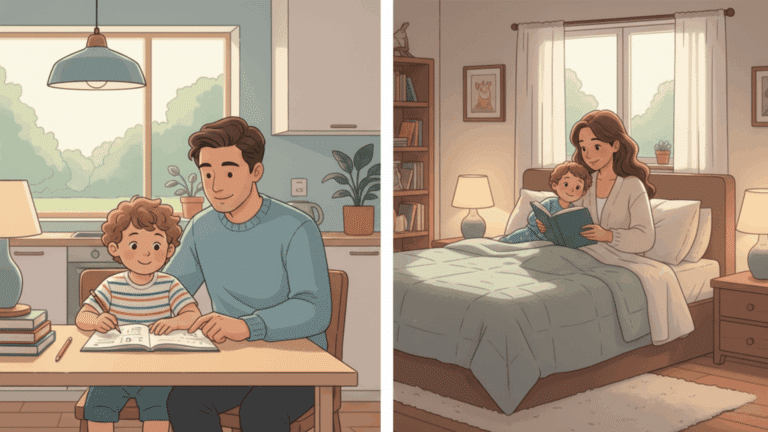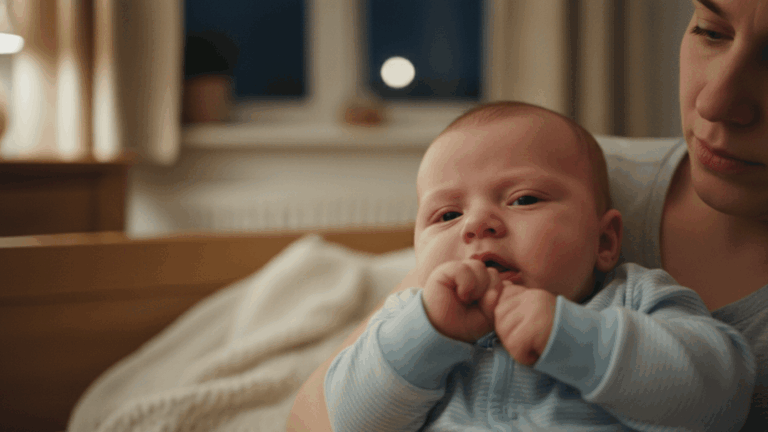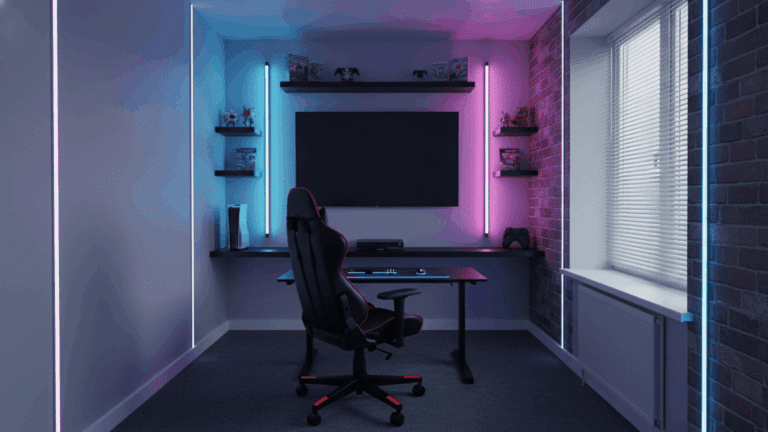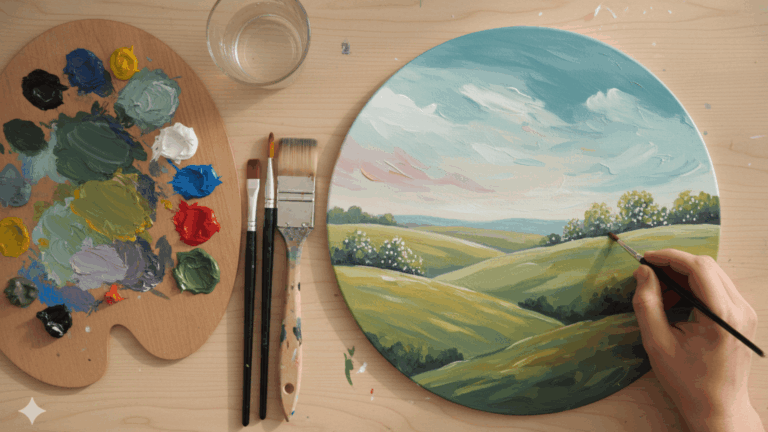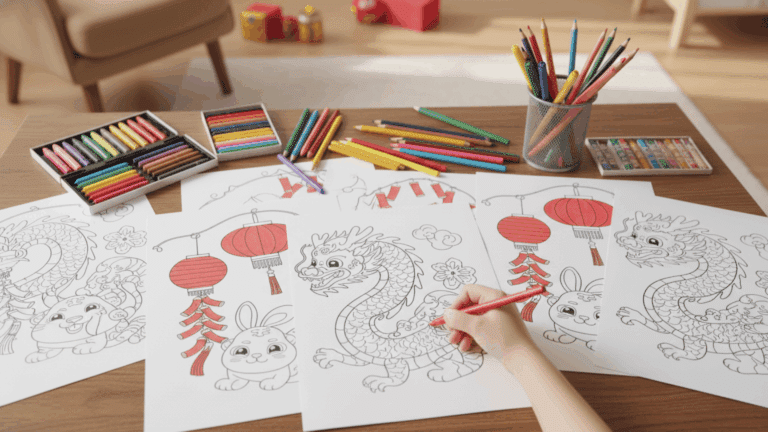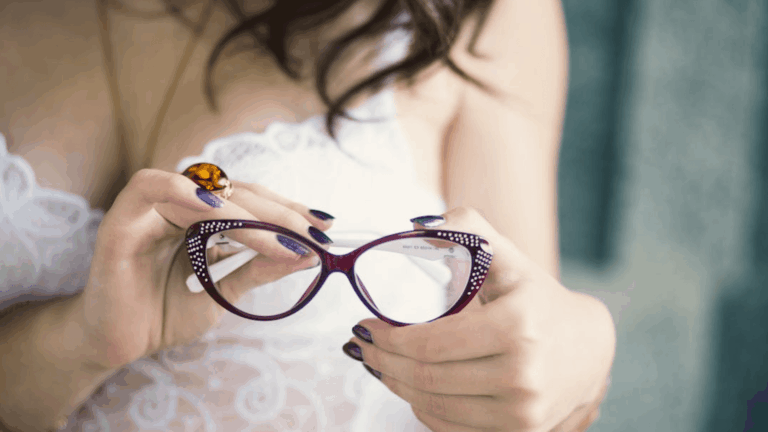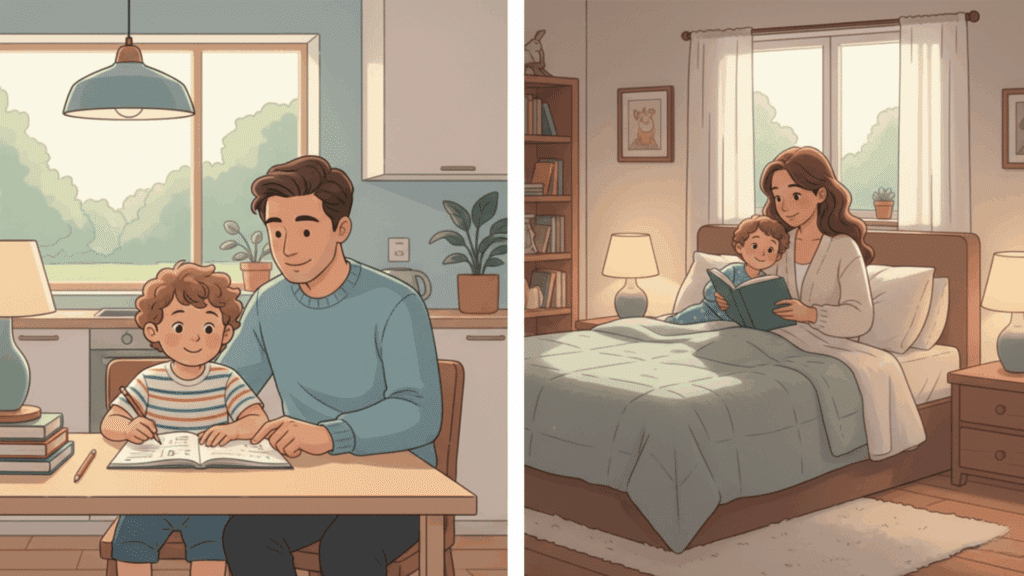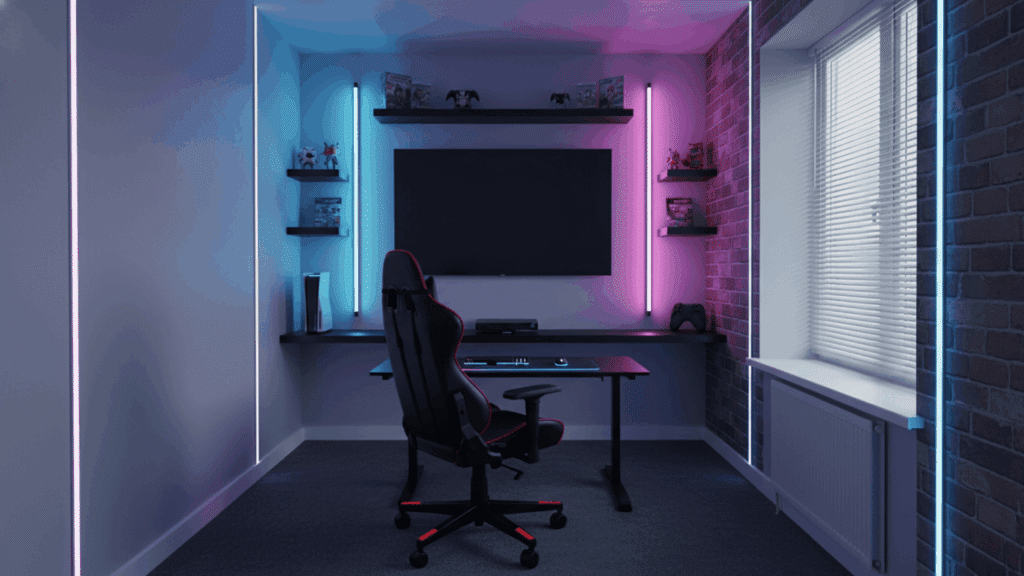New parents often find themselves staring at endless rows of tiny clothes, wondering if they’re buying too much or too little. You’re not alone in this confusion.
Shopping for baby clothes can feel overwhelming when you’re trying to balance practicality with those irresistible miniature outfits.
This blog will help you figure out exactly how many baby clothes you actually need without breaking the bank or cluttering your nursery.
We’ll walk through each size category, seasonal considerations, and more that will keep your little one comfortable while making your life easier.
How Many Baby Clothes Do I Need?
Planning a baby’s wardrobe doesn’t have to be complicated when you know the right numbers. Here’s a practical breakdown of essential items every new parent should stock up on.
Essential Baby Clothes Checklist
| Clothing Item | Recommended Quantity |
|---|---|
| Onesies (Short-Sleeve) | 8–10 pieces |
| Onesies (Long-Sleeve) | 6–8 pieces |
| Sleepers/Pajamas | 6–8 pieces |
| Pants/Leggings | 4–6 pairs |
| Shirts | 4–6 pieces |
| Socks | 8–10 pairs |
| Bibs | 6–8 pieces |
| Hats | 2–3 pieces |
| Swaddles/Sleep sacks | 3–4 pieces |
Baby Clothes by Size Category
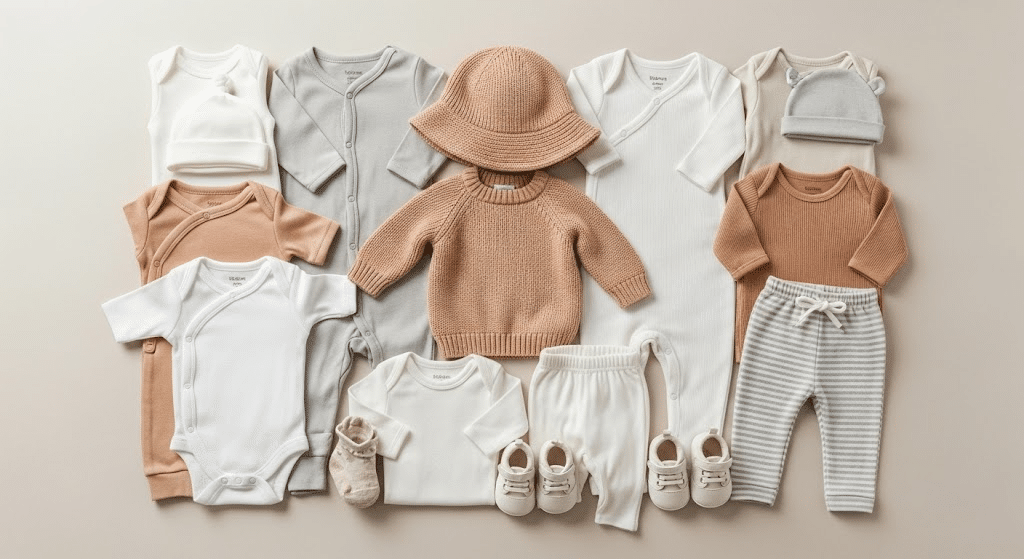
When organizing a baby’s wardrobe, understanding clothing needs by size is essential.
New parents often overlook how quickly babies outgrow newborn sizes and how mobility and seasonal changes influence clothing choices from newborn to 12 months.
Newborn (NB) (up to 8 lbs, 0–1 month)
Newborn clothes like onesies, sleepers, hats, socks, and swaddles provide warmth, comfort, and easy changes for delicate skin. Babies outgrow these quickly, so start with minimal NB and some 0–3M sizes.
- Onesies/Bodysuits: 5–7
- Sleepers/Pajamas: 5
- Hats: 2
- Socks/Mittens: 3–5 pairs
- Swaddles: 2–3
- Minimal needed; outgrown quickly
- Start with some NB and 0–3M
0–3 Months
Onesies, sleepers, pants, socks, hats, and burp cloths are the most-used baby essentials early on, allowing for frequent changes. These soft, stretchy basics keep your baby comfortable and make daily care easier.
- Onesies/Bodysuits: 7–10
- Sleepers/Pajamas: 5–7
- Pants/Leggings: 3–5
- Socks: 5–7 pairs
- Hats: 2–3
- Burp cloths: 6–10
- Most used early on; frequent changes
3–6 Months
As babies grow and become more active, growth slows and their wardrobe needs shift to accommodate increased movement and outings.
Essentials like onesies, sleepers, pants, and outfits remain important, while seasonal items can be added as needed for comfort and flexibility
- Onesies: 7–8
- Sleepers: 5–6
- Pants/Shorts: 4–6
- Outfits (outings): 3–4
- Socks/Hats: as needed
- Growth slows; more activity
- Add seasonal items
6–9 Months
Between 6 and 9 months, babies become more mobile and start solids, leading to extra outfit changes.
Stock up on onesies, sleepers, play clothes, and outing outfits, plus socks or pre-walker shoes as needed for comfort and easy clean-ups.
- Onesies: 6–8
- Sleepers: 5–6
- Play clothes: 4–6
- Outfits (outings/daycare): 3–5
- Socks/Shoes (pre-walkers): as needed
- Starts solids; more mess
- More mobility, more changes
9–12 Months
At this stage, babies become more active and may start walking, making flexible, adjustable clothing essential.
A practical wardrobe includes onesies, pants, pajamas and a few outfits, and choosing adjustable pieces helps them last longer as your baby grows.
- Onesies/Shirts: 6–8
- Pants/Shorts: 4–6
- Pajamas: 4–5
- Outfits: 3–4
- Sweaters/Jackets: 1–2
- May begin walking; shoes needed
- Adjustable clothes last longer
12–18 Months and Beyond
As toddlers reach 12–18 months and beyond, their clothing needs shift to accommodate more active play and growing independence.
At this stage, sizes last longer, so you can slowly rotate out smaller items while maintaining a practical wardrobe with essentials like tops, bottoms, pajamas, and seasonal outerwear.
- Tops and bottoms: 6–8 each
- Pajamas: 4–5
- Daycare/Play clothes: 5–7
- Outerwear (seasonal): 1–2
- Sizes last longer
- Rotate out smaller items slowly
Optional But Nice-to-Have Items
| Category | Examples |
|---|---|
| Occasionwear | Dressy outfits for photos, holiday-themed clothing and special event outfits |
| Special Fabrics | Organic cotton pieces, bamboo fiber clothing and hypoallergenic materials |
| Convenience Items | Baby gowns, kimono-style tops, extra drool bibs |
Main Baby Clothing Essentials
1. Onesies/Bodysuits
These are the core of any baby’s wardrobe. Choose a mix of short and long sleeves depending on the weather. They are comfortable, easy for diaper changes, and can be layered.
Check out our recommendations for babies’ onesies: Simple Joys by Carter’s Baby 8-Pack Short-Sleeve Bodysuit
2. Sleepers/Footed Pajamas
Ideal for nighttime and naps, these keep your baby warm and covered. Look for zippered or snap closures for convenience.
Check out our recommendations for baby footed pajamas: HAPIU Rayon from Bamboo Baby Footed Pajamas, 2 Way Zipper YKK, Footie for Baby Boy Girls, Newborn-24 Months
4. Pants/Leggings
Soft, stretchy pants or leggings pair with onesies for extra warmth and coverage, especially as your baby becomes more active.
Check out our recommendations for baby leggings: Amazon Essentials x Sofia Grainge Unisex Toddlers and Babies’ Leggings, Pack of 3
5. Hats and Socks/Booties
Hats protect from the sun or cold, and socks or booties keep tiny feet warm. Adjust the thickness based on the season
Check out our recommendations for baby hats and socks: Baby Boy Girl Cotton Hat Mitten Sock Set 15 Pack Infant Essential Accessories for 0-6 Months
Smart Shopping Tips for Baby Clothes
From choosing practical fabrics to shopping secondhand, these tips help families save money, reduce clutter, and keep daily routines stress-free.
- Secondhand stores and parent swaps offer gently used clothes at a fraction of retail prices, which is perfect since babies outgrow sizes so quickly that many items barely get worn.
- Neutral colors like white, gray, and beige work for any gender and hide stains better than bright colors, making them practical for multiple children or resale value.
- Those adorable outfits with tiny buttons, complex zippers, or delicate fabrics often sit unworn because they’re too fussy for daily diaper changes and frequent washing.
- Snap closures beat buttons every time, stretchy fabrics work better than stiff materials, and machine-washable items save sanity when dealing with constant laundry loads.
- Before buying anything cute, ask yourself if it will actually get used, can you change a diaper easily in it, will it survive multiple washes, and does it fit your real daily routine with your baby.
To Conclude
Building the perfect baby wardrobe comes down to balancing having enough clothes to handle daily chaos without drowning in tiny outfits that barely get worn.
The key is starting with the essentials and adding extras as needed.
Every family’s situation is different, so adjust these numbers based on laundry habits, climate, and lifestyle. Don’t stress about having the perfect amount from day one.
Ready to start shopping? Use this checklist as your guide, but trust your instincts too. Your baby’s wardrobe should work for your real life, not some perfect parenting fantasy.
What’s your biggest concern about baby clothes shopping?


